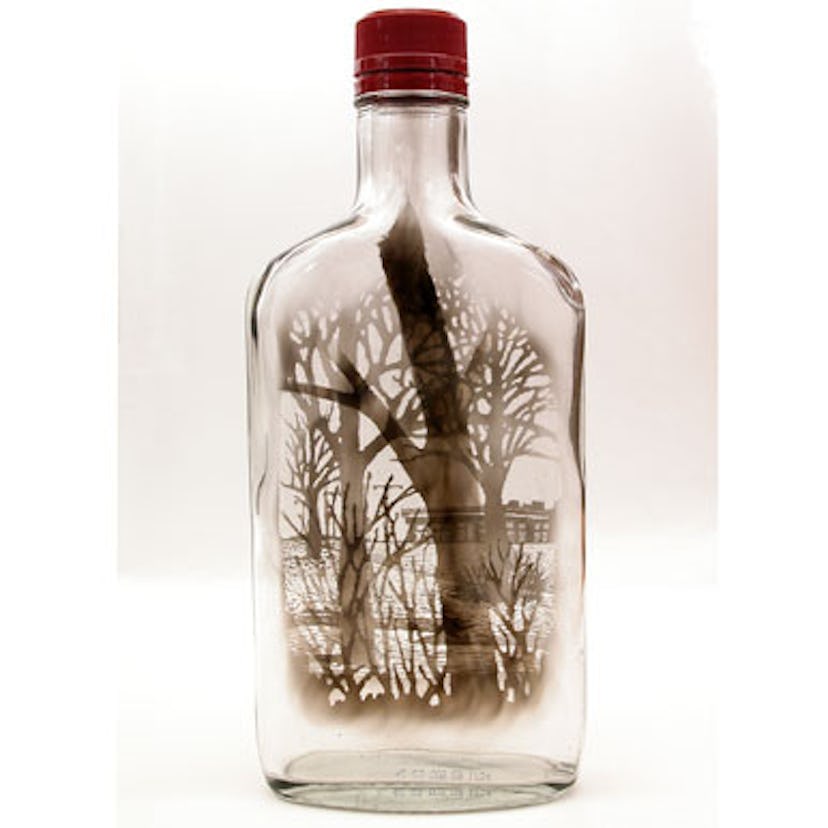The Museum of Art and Design explores Dust, Ashes, and Dirt
New York's Museum of Art and Design explores unusual, often overlooked territory with its new exhibit, Swept Away: Dust, Ashes, and Dirt in Contemporary Art and Design. Unconventional mediums unite works from a diverse group...

New York’s Museum of Art and Design explores unusual, often overlooked territory with its new exhibit, Swept Away: Dust, Ashes, and Dirt in Contemporary Art and Design. Unconventional mediums unite works from a diverse group of artists, from known names like Vik Muniz to lesser-known artists like Phoebe Cummings.
“When I started looking [for artists], I wasn’t sure what I would find,” says curator David McFadden. “But it was like opening Pandora’s Box.” Twenty-five artists are represented on two floors of the Colombus Circle building–each exploring facets of process rather than product, the ephemeral, and of loss.
Jim Dingilian shows a beautiful series of bottles–using found items, he coats the inner surface with dark smoke, and then uses long needles to slowly draw in the negative. “Much of my work involves the modification of found objects to suggest the passage of time and the fleeting nature of memory,” he writes in his notes.
There’s a striking instillation of historic soil samples from all five New York boroughs. The artist, Margaret Boozer, was attracted to them for their unusual number of human traces–pieces of asphalt, concrete, glass, coal dust, and other detritus–all remnants of the lives that came before and generations of lost history in the city.
Kim Abeles’ Smog Collectors touches on environmental issues. She placed a dinner setting–plates, tablecloth, and all–on the roof of her Los Angeles studio with stencils depicting meals. After several months, she removed the stencils and fired the plates with the thick layer of smog and dust that collected in tact–to disturbing effect. “Since the worst in our air can’t be seen, Smog Collectors are both literal and metaphoric depictions of the current conditions of our life source, the air we breathe,” she writes.
Some works were so temporary that they could only be represented in video, like Alexandre Orion’s Ossario project. In an exhaust-and-soot-filled tunnel in São Paulo, Orion slowly wiped away the grime to create a series of skull images. The city responded by arresting him and blasting away his work with a water cannon–though not going so far as to actually clean the filthy tunnel.
Reverse Graffiti: Ossario, street art by Alexandre Orion
Fittingly, live performance art will be an important component of the exhibition, Elvira Wersche, an icon in this niche field, will be creating an intricate design from sand collected from more than 600 sites around the world, starting on February 27. The painstakingly crafted design, which works to represent the relationships between the different locations, will be swept away as choreographed dancers move through the piece on March 6. Museum guests will then be able to take home the remaining sand.
Swept Away: Dust, Ashes, and Dirt in Contemporary Art and Design will be on display at the Museum of Art and Design from February 7th through August 12th.